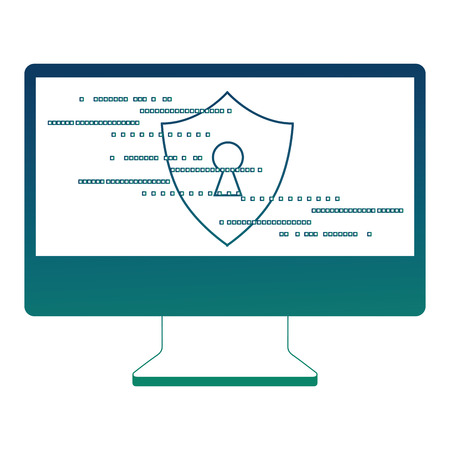1. The Importance of Data Security in Accounting Software
For US entrepreneurs, choosing the right accounting software isn’t just about convenience or features—it’s also about keeping sensitive business data safe. As more small businesses move their financial operations online, protecting customer details, payroll information, and tax records has become a top priority. Let’s break down why data security matters so much when it comes to accounting platforms.
Why Data Security Is Critical for Entrepreneurs
Accounting software stores some of your most valuable business data. If that information falls into the wrong hands, the consequences can be serious—not just for your business, but also for your clients and employees. Common risks include:
| Risk | Description | Potential Consequence |
|---|---|---|
| Data Breaches | Unauthorized access to sensitive financial records | Financial loss, legal penalties, damage to reputation |
| Phishing Attacks | Fraudulent attempts to steal login credentials | Theft of funds or confidential data, identity theft |
| Ransomware | Malicious software that locks you out of your data unless you pay a ransom | Business interruption, financial losses, potential data loss even after payment |
| User Error | Mistakes by employees, such as sharing passwords or downloading suspicious files | Unintentional data exposure or loss of critical business information |
The Stakes Are High for US Businesses
In the United States, both state and federal regulations require businesses to protect customer and employee data. Failing to do so can result in fines and lawsuits. Plus, news of a security breach can quickly erode customer trust—something that’s hard to regain in today’s competitive market.
Examples of What Could Go Wrong:
- A hacker steals your customers’ credit card numbers from your accounting system.
- Your payroll files are locked by ransomware just before payday.
- You accidentally send sensitive tax documents to the wrong email address.
Bottom Line:
If you’re running a business in the US, investing in secure accounting software is not optional—it’s essential for protecting your operations and building long-term trust with your clients.
2. Key US Compliance Regulations for Financial Data
When running a business in the US, understanding the key compliance regulations that impact your accounting software is crucial. Failing to follow these rules can lead to fines, legal trouble, and damage to your reputation. Let’s break down the main laws and standards you need to know about.
Major US Financial Data Compliance Laws
| Regulation | Who It Applies To | Main Requirements |
|---|---|---|
| Sarbanes-Oxley Act (SOX) | Public companies | Accurate financial reporting, internal controls, regular audits, data security measures |
| Gramm-Leach-Bliley Act (GLBA) | Financial institutions (including many small businesses) | Protect customer information, have a written security plan, limit sharing of data |
| IRS Requirements | All businesses filing taxes in the US | Store financial records securely for at least 3-7 years, ensure data privacy and integrity |
What Entrepreneurs Need to Do to Stay Compliant
- Choose the Right Software: Make sure your accounting software supports features like audit trails, access controls, and encryption.
- Keep Records Secure: Store digital records safely and back up regularly. Limit who can see sensitive information.
- Follow Retention Rules: Keep all tax-related documents for the required number of years—usually 3-7 years depending on the document type.
- Stay Up-to-Date: Laws change! Subscribe to updates from regulatory agencies or talk with your accountant often.
- Create Written Policies: Especially important if you handle customer financial data. Document how you protect and manage information.
Quick Tip: Not Just for Big Companies!
You might think some of these rules only apply to big corporations, but many small businesses fall under these regulations too—especially if you handle customer financial data or work in finance. Always check which laws apply to your business type and size.

3. Essential Features to Look for in Secure Accounting Software
When choosing accounting software for your business, especially in the US where data security and compliance are critical, it’s important to focus on features that keep your financial information safe. Here are some must-have security features you should always check for:
Encryption: Protecting Your Data from Unauthorized Access
Encryption is like locking your financial data in a digital vault. Look for software that offers strong encryption both when your data is stored (at rest) and when it’s being sent over the internet (in transit). This ensures that even if someone intercepts your data, they can’t read it without the proper key.
Common Encryption Types Used by Leading Software
| Encryption Type | What It Does |
|---|---|
| AES-256 | Highly secure standard used by banks and government agencies |
| SSL/TLS | Protects data during online transactions and logins |
Access Controls: Deciding Who Gets In
Not everyone in your company needs access to all financial details. Good accounting software lets you set role-based permissions—so employees only see what they need for their job. This limits the chances of accidental or intentional misuse of sensitive information.
Examples of Role-Based Access Levels
| User Role | Typical Permissions |
|---|---|
| Administrator | Full access to all settings and data |
| Accountant/Bookkeeper | Edit and view financial records, but no access to user management settings |
| Employee/User | Limited view, such as submitting expenses or viewing pay stubs only |
Audit Trails: Keeping Track of All Activities
An audit trail logs every action taken within your accounting system—who did what and when. This feature is crucial if you ever need to investigate suspicious activity or prove compliance during an audit. Make sure your software provides detailed, easily accessible logs.
Key Audit Trail Features to Look For:
- Date and time stamps for each action taken
- User identification for every change made
- The ability to filter and export logs for review or compliance audits
Other Security Must-Haves for US Businesses
- Multi-factor authentication (MFA): Adds an extra layer of protection beyond just passwords.
- Automatic backups: Ensures your data isn’t lost due to cyberattacks or hardware failure.
- Compliance certifications: Look for SOC 2, HIPAA (if dealing with health info), or PCI DSS (for payment processing).
- Regular software updates: Keeps your system protected against new threats.
4. Best Practices for Managing Data Security in Your Business
As a US entrepreneur, keeping your accounting data safe is crucial—not just for your own peace of mind, but also to stay compliant with American laws and industry standards. Here are some straightforward, actionable steps you can take right now to boost your accounting software’s security.
Employee Training: Your First Line of Defense
Your team can either be your strongest shield or your weakest link when it comes to data security. It’s essential to provide regular training on recognizing phishing emails, creating secure passwords, and safely handling sensitive financial information. Encourage employees to report anything suspicious immediately—better safe than sorry!
Regular Software Updates: Don’t Ignore Those Notifications
Software updates are not just about new features—they often include patches for security vulnerabilities. Make sure both your accounting software and all connected devices are set to update automatically, or establish a routine check-in schedule to ensure everything stays up-to-date.
Strong Password Policies: Don’t Settle for “123456”
Weak passwords are an open invitation for cybercriminals. Implement a company-wide password policy that requires strong, unique passwords and encourages the use of password managers. Multi-factor authentication (MFA) adds another layer of protection by requiring users to verify their identity using a second device or method.
| Best Practice | Why It Matters | How To Implement |
|---|---|---|
| Employee Training | Reduces risk of human error and scams | Schedule quarterly workshops; share security tips via email or posters |
| Regular Software Updates | Keeps your system protected from new threats | Enable auto-updates; assign someone to monitor update status monthly |
| Password Policies & MFA | Makes unauthorized access much harder | Use complex passwords; require MFA on all financial accounts |
| Data Access Controls | Keeps sensitive info limited to those who need it | Review user roles in your software; restrict access when employees leave or change roles |
| Secure Backups | Protects against data loss from breaches or system crashes | Set up automatic cloud backups; test recovery process regularly |
Access Controls: Only the Right People Get In
You don’t want everyone in the company accessing payroll or tax data. Use your accounting software’s built-in controls to limit access based on job responsibilities. Review these permissions regularly, especially when someone leaves the company or changes roles.
Secure Backups: Always Have a Plan B
No matter how careful you are, accidents and breaches can still happen. Make sure your accounting data is backed up securely—ideally in the cloud with encryption. Test your backup system periodically so you know you can recover quickly if something goes wrong.
5. What to Do in Case of a Data Breach
Step-by-Step Guide for US Entrepreneurs
Data breaches can happen to any business, even with the best security measures in place. If you suspect or confirm a breach involving your accounting software, it’s crucial to act quickly and follow a clear plan. Here’s what you should do:
Immediate Actions
| Step | Action |
|---|---|
| 1 | Isolate the Breach: Disconnect affected systems from the network to prevent further data loss. |
| 2 | Assess the Damage: Identify what data was accessed and which users or accounts were impacted. |
| 3 | Preserve Evidence: Document everything about the breach—date, time, how it was discovered, and actions taken so far. |
Notify Key Stakeholders
- Internal Team: Inform your IT staff and management right away.
- Legal Counsel: Consult an attorney familiar with data privacy laws like CCPA and other state regulations.
- Your Accountant or Bookkeeper: Let them know so they can help secure financial records.
Legal Notifications
If personal or financial data is compromised, federal and state laws may require you to notify:
- Affected Individuals: Send timely notifications explaining what happened, what information was exposed, and steps they should take.
- The Authorities: Report the breach to law enforcement if required. Some states also require notification to the Attorney General’s office.
- Banks & Credit Bureaus: If banking details are involved, notify relevant institutions to monitor for fraud.
Restoring Trust with Customers and Partners
Your reputation matters. Here’s how you can rebuild trust after a breach:
- Be Transparent: Communicate openly about the incident and ongoing efforts to resolve it.
- Offer Support: Provide credit monitoring or identity theft protection if sensitive customer info was leaked.
- Tighten Security: Share steps you’re taking to strengthen data protection and prevent future breaches.
Quick Reference Table: Data Breach Response Steps
| Phase | Main Actions |
|---|---|
| Detect & Isolate | ID breach, disconnect affected systems, document incident details. |
| Assess & Contain | Anaylze scope, preserve evidence, prevent more leaks. |
| Notify & Comply | Alert stakeholders, legal counsel, fulfill regulatory requirements. |
| Recover & Rebuild Trust | Communicate transparently, offer support, improve security measures. |
If you use cloud-based accounting software, check with your provider for additional support—they often have dedicated teams to guide you through incidents like this. Taking these steps will help protect your business and reassure everyone involved that you’re handling things responsibly.


